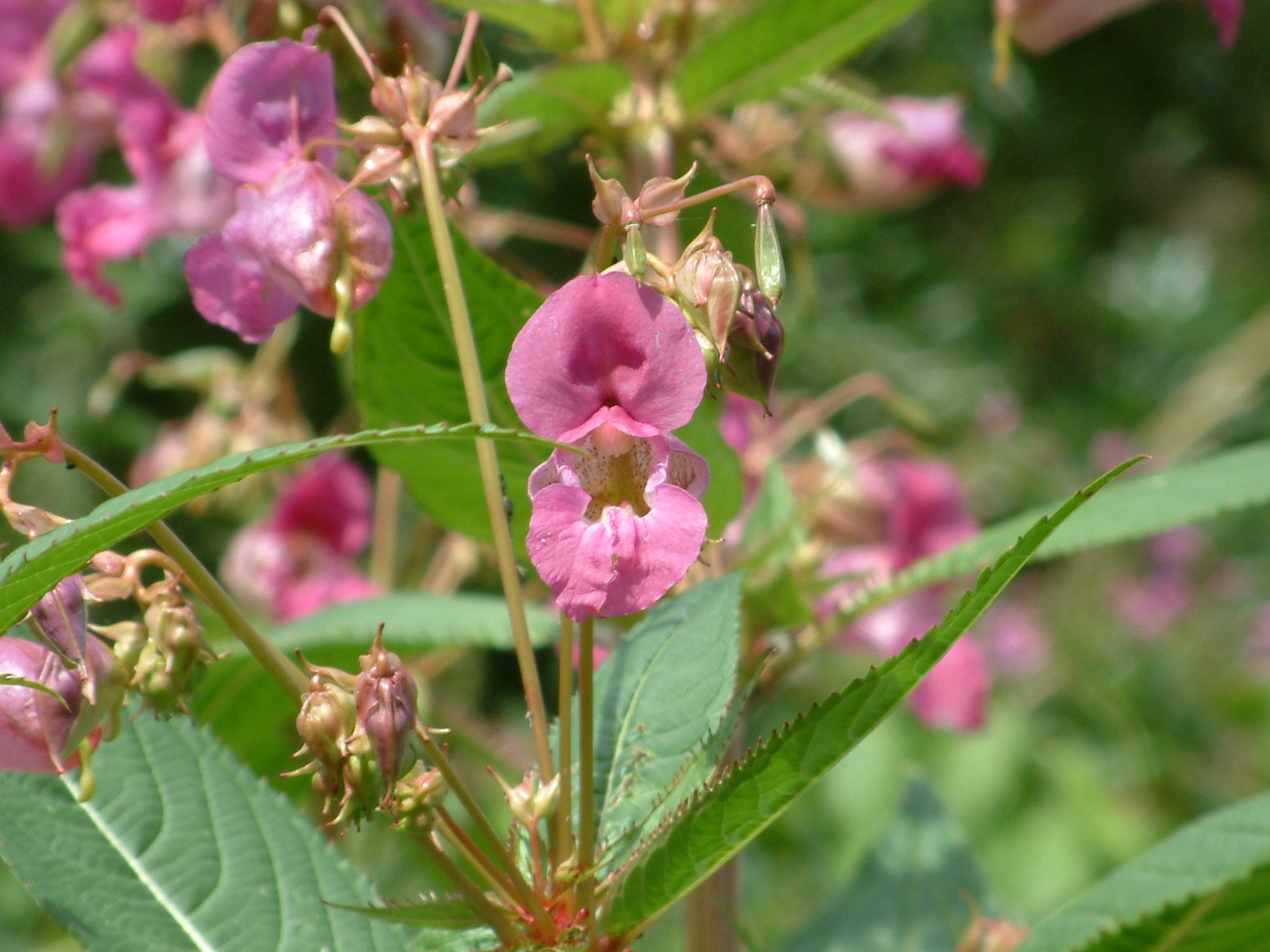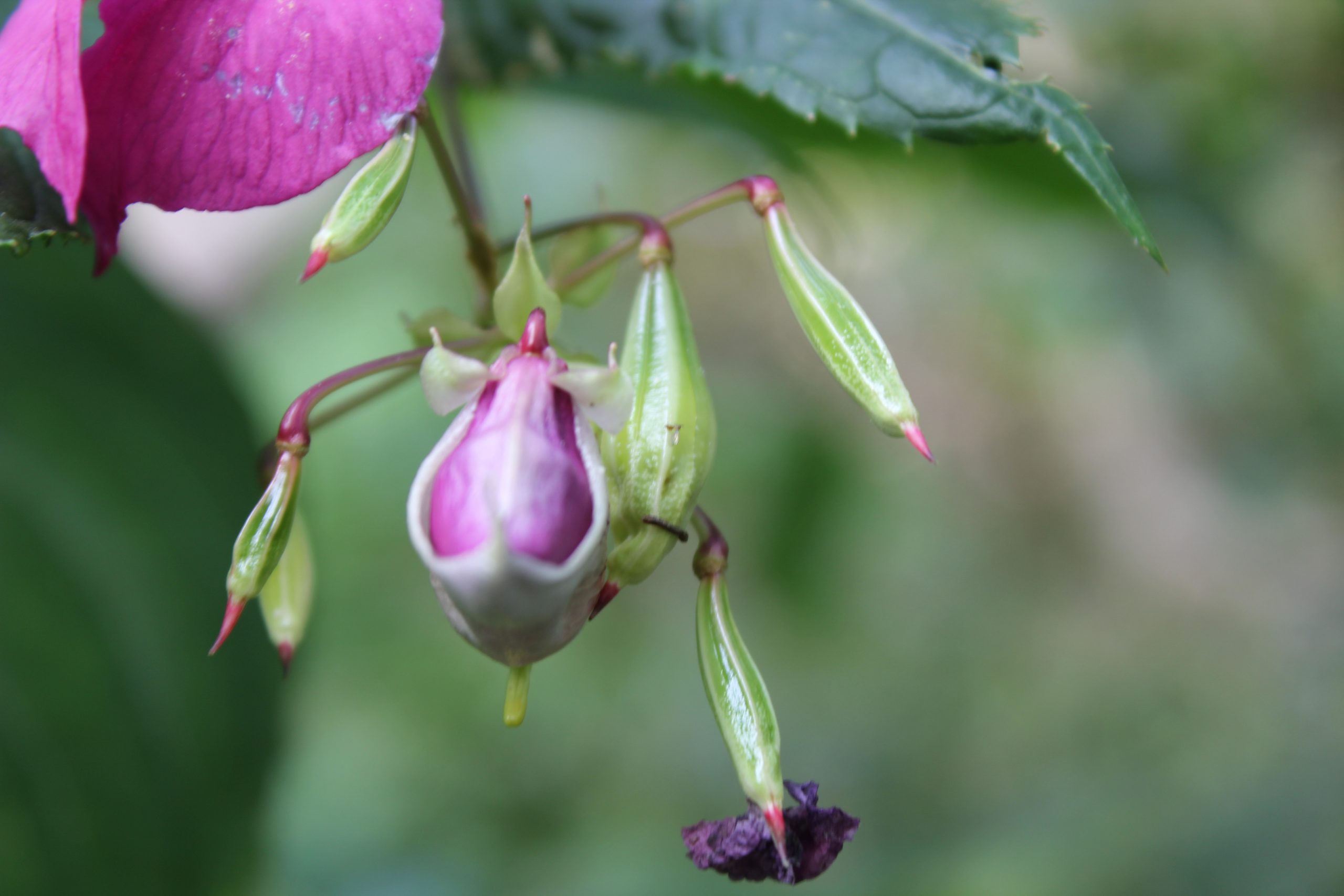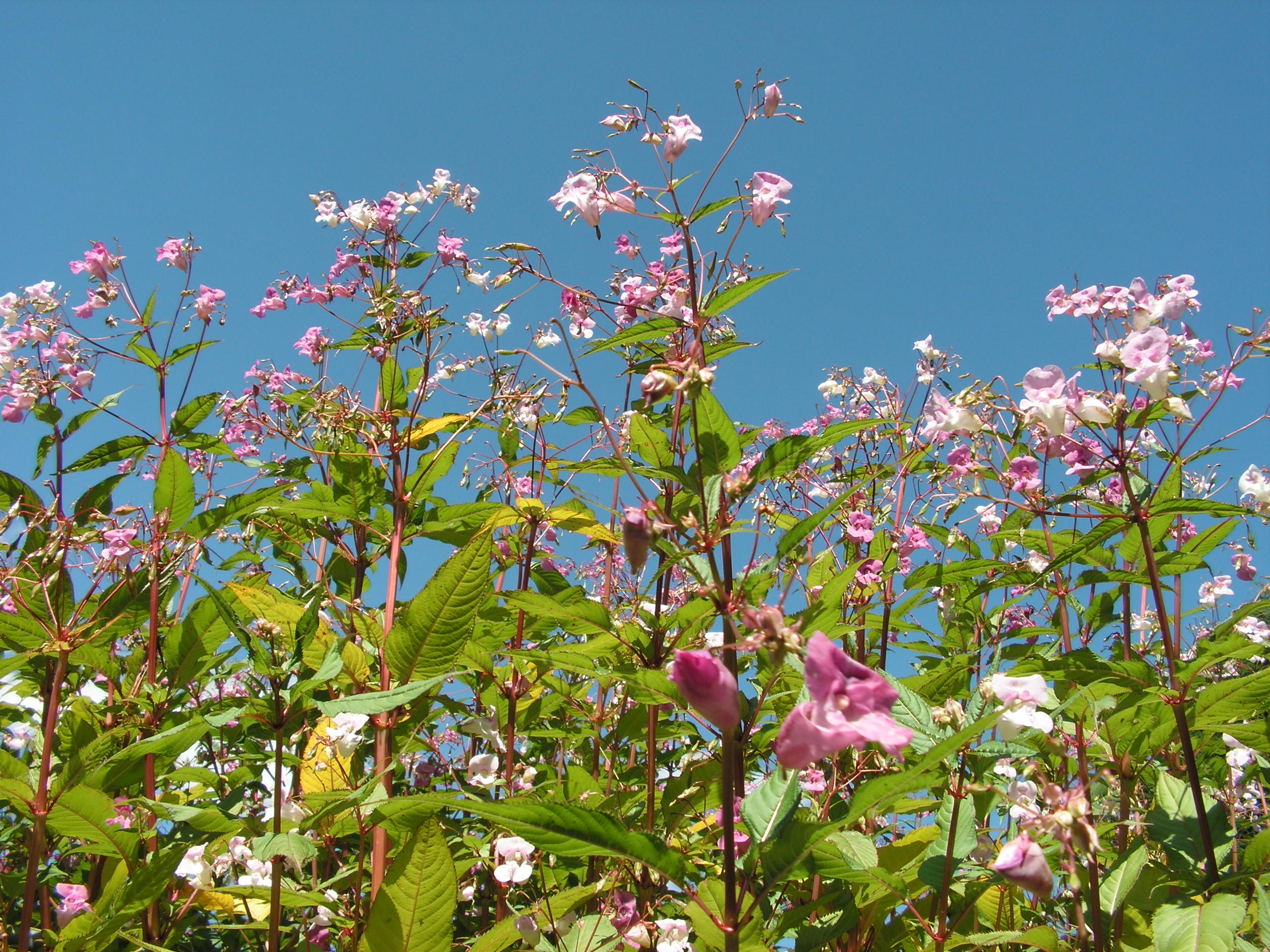Often called ‘touch me not balsam’ this highly invasive plant is becoming an environmental and commercial issue in many parts of the UK.
The exploding seed heads of Himalayan balsam cause widespread environmental impact. It’s dominating behaviour poses a real threat to our native species. This species is one to watch – we’re seeing more infestations then ever before, and it’s a real issue for land owners, land managers and local authorities up and down the UK. Here we explain why this invasive plant is such an environmental and commercial problem, and how to control or remove it.

What is Himalayan balsam and how did it get here?
Scientific name: Impatiens glandulifera also known under these common names: Himalayan balsam, Indian balsam, jewelweed, Policeman’s helmet. The genus name Impatiens, means “impatient”, and refers to its method of seed dispersal. The species name glandulifera comes from the Latin words glandis meaning ‘gland’, and ferre meaning ‘to bear’, referring to plant bearing glands.
A native of the temperate and humid areas of the Western Himalayas from Northern Pakistan to the East through Kashmir in North-West India, it was brought into Europe in the first half of the 19th century as ornamental and melliferous (honey producing) plant, when some of the plant’s seeds were sent to Kew Gardens (London) in 1839. By 1848 the plant had naturalized and now this species is distributed across most areas of the British Isles and is believed to be one of the most dangerous alien species.



characteristics of Himalayan balsam
Himalayan balsam is the largest herbaceous plant in Europe which at shady spots can grow as tall as two and half meters tall. All seeds germinate early spring, their speciality is they can start their germination under water.
The life-cycle of Himalayan balsam looks like this:
- Day 8: Seeds germinate
- Day 12: the roots start to develop
- Week 4: the leaves start to photosynthesize and emerge
- Week 13: the flowers appear
Tall stems with matt darkish green finely serrated leaves, stout succulent hollow reddish translucent stems (up to 3 metres in height) and shallow roots. In the spring the stems are predominantly green and turn red as the year progresses and the elliptical leaves and side branches arise in whorls of 3-5 from the stem joints. Flower heads are typically pink but less common varieties (below) are white.
Flowering is most intensive from July to August but it can begin in June and at the most shady habitats can lasts till end of October or beginning of November. The characteristic purplish-pink “Policemans helmet shaped” flowers start to appear in June. Each flower lasts for 2–3 days.
In the Winter months Himalayan balsam dies off leaving a “hay like mat” within the colonised area.
 exploding seed pods
exploding seed pods
Usually from Mid-July seed heads begin to form and this continues through to October. The distinctive characteristic of the plant are the seed capsules, which provide its alternative name “Touch-me-not” balsam. Each plant produces more than 2,500 seeds which can remain viable for up to 2 to 3 years and can be easily transported by water. When the seed pods mature they explode when touched, scattering the seeds as far as 7 metres away.

The seed heads and flowers that emerge in early summer.
 Himalayan balsam quickly spreads to thickets that out-compete native species.
Himalayan balsam quickly spreads to thickets that out-compete native species.
The team on a Hand-pulling volunteering event
Legal implications
Himalayan balsam is listed under Schedule 9 of the Wildlife and Countryside Act 1981 with respect to England and Wales. As such, it is an offence to plant or otherwise allow this species to grow in the wild and was included in Scotland by the end of 2011.
Environmental impact
Due to its vigorous growth, Himalayan balsam soon dominates and suffocates all other plants within its vicinity. On riverbanks this can cause major problems of erosion. It is the tallest annual weed in Britain, growing to more than 3 metres in height. Colonisation of riparian areas can cause a deterioration of ecological status under the Water Framework Directive and the UK’s Biodiversity Action Plan lists the species as an invasive alien, so many areas have now introduced eradication policies.
Creating increased flooding
With the increased flooding the UK has suffered recently we’ve seen a rise in balsam clusters in areas not previously associated with the plant. It thrives in moist soil hence it has colonised more of the UK’s riverbanks, creeping onto surrounding land. Not having an extensive root system that binds river banks together, and its ability to overtake perennial plants that do have root systems destablises our river banks and leads to flooding.
Seeds can float through flowing water and become attached to vehicles, clothing or footwear. This means that a single plant can have a significant impact on the surrounding habitat, causing an outbreak of Himalayan balsam within a time period of just one year.
An absence of natural predators in the UK enables dense colonies of Himalayan balsam to quickly establish, leading to adverse effects which include:
- Negative impact on invertebrate feeding groups, resulting in a decrease in spider, beetle and bug species.
- Himalayan balsam produces a large amount of nectar, which attracts pollinating insects, possibly to the detriment of native flowering plants.
How to remove Himalayan balsam
There are 5 main methods we use to control Himalayan balsam, depending on the site of infestation:
- Herbicide
- Hand-pulling
- Mechanical
- Excavation
- Biological treatment
To find out about any of the above methods or to get a quote to control or remove Himalayan balsam get in touch.


